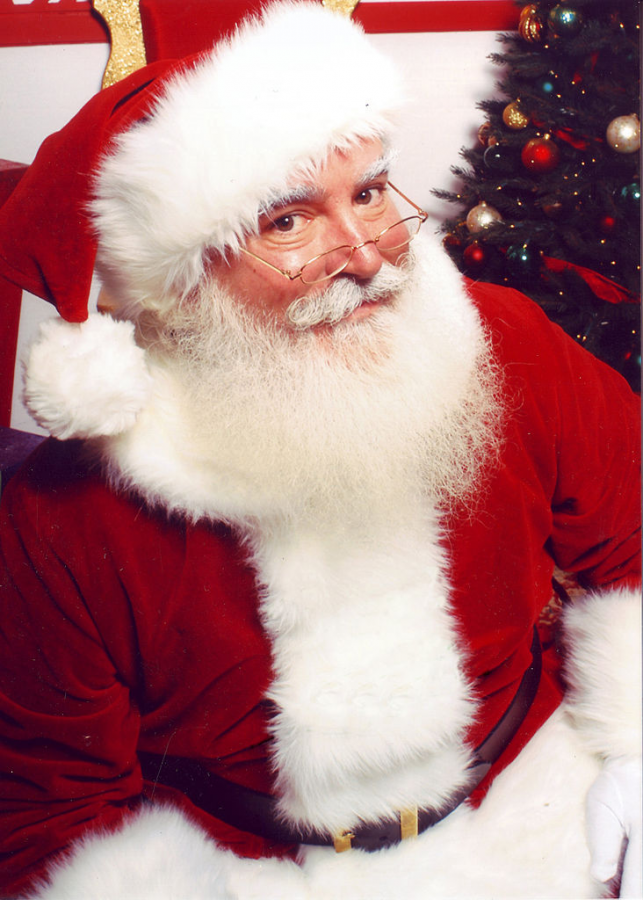Ho Ho Huh?
During the holiday season, the world is abuzz with imagery of Santa Claus. However, few people know much about the origins of different aspects about Kriss Kringle.
The jolly old fat man himself.
December 14, 2019
Santa is one of the most popular symbols of Christmastime. The jolly old man who delivers presents to every good girl and boy has been around for many, many years. Despite his cultural pervasiveness, however, few people understand where we get the image of Father Christmas, besides his evolution from the Christian Saint Nicholas.
We start with his reindeer, who magically fly to help Santa deliver his presents. According to CNN, we can trace these back to the Sámi indigenous people, the oldest living cultural group in all of North Europe, where reindeer lay at the heart of their culture. After the indigenous group gained publicity in America, Macy’s held a promotional parade showcasing Santa, reindeer, a sleigh, and several traditional Sámi herders. Their names come from Clement Clarke Moore’s 1822 poem called “The Night Before Christmas,” which is thought to describe Santa’s mode of transportation for the first time.
Next up, Santa’s helpful little elves. ElfCrazy describes the traditional elves of European folklore; diminutive creatures divided into light elves and dark elves, with physical characteristics, not unlike the gnomes of Renaissance alchemy. They were used to protect homes against evil in the pagan times. Offerings of porridge would encourage the elves to protect the household. The elves would be good to you if you were good to them, but would retaliate if you treated them poorly. Scandanavian writers noticed the growing popularity of Christmas, and decided to use elves as a supernatural being to associate with the holiday. Throughout the years, they became Santa’s somewhat mischievous helpers who aid him in making and delivering Christmas presents. Modern writers have used this idea and turned Christmas elves into the small, red-and-green wearing creatures with pointy ears and big responsibilities.
As much as a surprise it might be, Santa’s red-and-white, fur-lined suit did not come into existence until Coca Cola’s advertising campaigns. CocaColaJourney describes the previous versions of Santa as donning a huntsman’s furs and even a bishop’s robe. However, after some trial and error, Coca Cola settled on advertising their soda with the Christmas figure in a red suit, which went on to become Santa’s most common attire.
One of the most popular traditions on Christmas Eve is leaving cookies and milk for Santa. This tradition is more straightforward than others. Wockenfuss Homemade Candies states that the tradition stems from the traditional feast of Saint Nicholas, where children would leave food and drink for Nicholas and his helpers in exchange for gifts. It may have also originated from the German tradition of using food items as decorations on Christmas trees, which would be eaten during the night. A more extraordinary version of the tradition comes from Norse mythology, where people would leave hay out for Odin’s eight-legged horse Sleipnir, as a hope that the god would stop by on his adventures.
Santa’s name even has a story all its own! According to History, Santa Claus comes from Saint Nicholas’s Dutch name, Sint Nikolaas, shortened as Sinter Klaas. Even in 1809, Washington Irving used Sinter Klaas as the patron saint of New York in “The History of New York.”
Something we rarely question is the reasoning behind Santa’s entrance through the chimney. According to Chimney and Masonry Outfitters, the book “The History of New York” contained the first account of Santa coming into houses through the chimney. Nonetheless, this idea was not popularized until 1823, when “A Visit From Saint Nicholas,” also known as “Twas the Night Before Christmas,” was written. However, people historically believed that supernatural beings, including witches, fairies, and elves, entered houses through the chimney. This belief also inspired other mythological creatures, like the Italian La Befana and German Pelznickel. Legends of the real Saint Nick include him dropping bags of gold into the chimneys of poor Turkish families to pay for their daughters’ dowries, though chimneys had not been invented by this time in the region.
As we will forever cherish the childhood memories of Santa Claus, it is important to know where these concepts come from. Now, this fantasy might seem a little more important, both culturally and individually.









